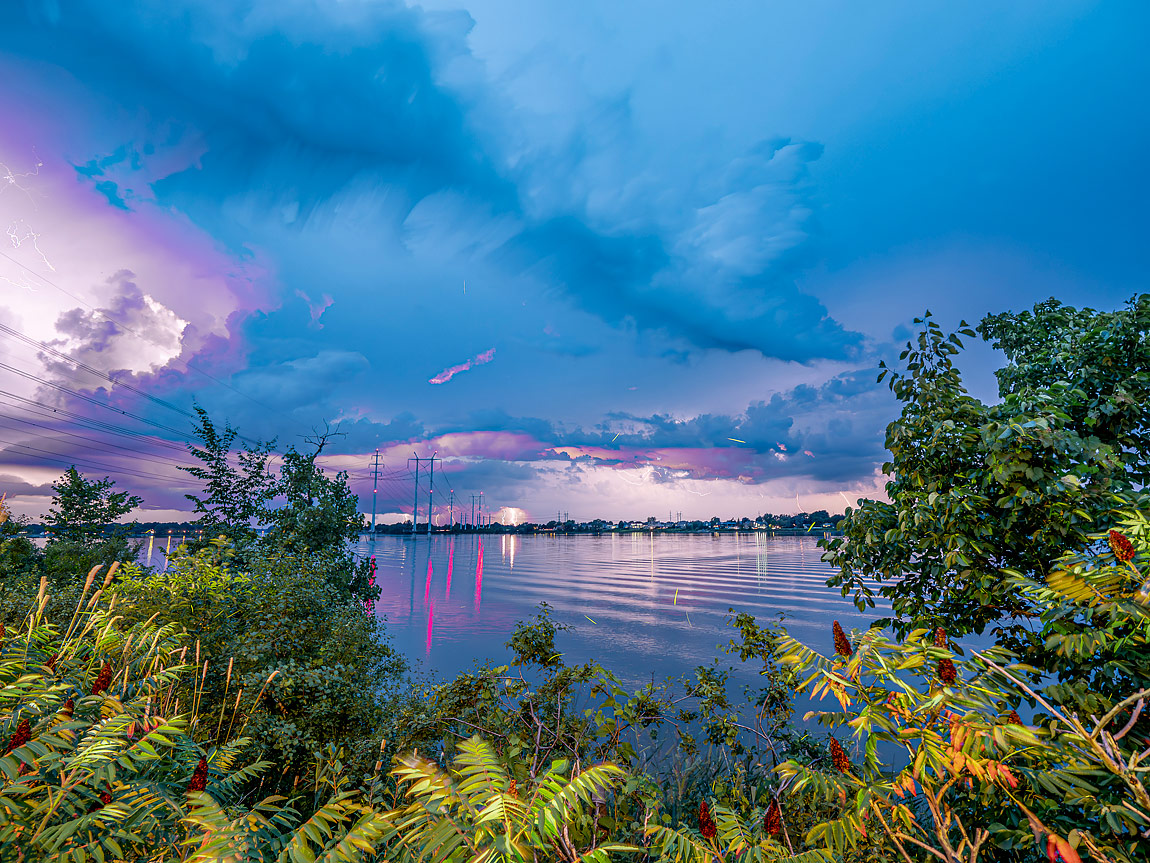One afternoon in July, the sky was full of fine white clouds, reminding me of a shot published on my LPM portfolio. The shot shows the gorgeous sunset at the Riviere Des Prairies shoreline. I decided to go back to this location, 16 minutes away from home!
Twenty minutes after sunset, I heard thunder on the north shore of the river. I had in mind to catch flashes of lightning.
I installed my tripod, camera, wide-angle lens and cable release and found a location on the side of the road with a view of the north side!
Some mirrorless cameras have a gorgeous feature for performing smart long exposures. On my m4/3 camera, it is called live Composite. Let me explain.
Using this mode, when I pressed the shutter, the camera captured the global scene and then after, when I re-pressed the shutter, at each 0,6 sec, the camera checked If there were some pixels more lighted than before and made the adjustments to the global raw file. During the process, I see the developing image and the histogram on the back screen. Fifteen minutes later, I pressed the shutter to stop the process. I should call this feature “A smart long exposure”
Later, in post-production using Lightroom, I created a sky mask and performed a dehaze set at +15. I duplicated and inverted this mask and put the shadows to +100. Then, I pressed the AUTO button in LR to let the software perform all the other adjustments automatically!
I was amazed by the results, especially the small lightning strikes in the background and the light in the cloud (upper left section).
This technical feature brings dynamism to long exposures and offers a lot of creative possibilities!


